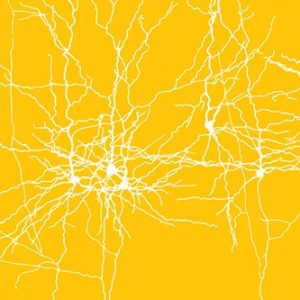ELSC Heller Lecture Series
Home » Heller Lecture Series » Human CNS Pain Pathways and Networks
Heller Lecture Series in Computational Neuroscience
Prof. Fred Lenz
The Johns Hopkins Hospital, Department of Neurosurgery, Baltimore - USA

On the topic of:
Human CNS Pain Pathways and Networks
Processing of pain in the region of the human thalamic somatosensory nucleus (ventral caudal – Vc) and cortex have been poorly understood. We have now demonstrated that neurons in the region of Vc respond either differentially or selectively to thermal and painful stimuli. Spontaneous and evoked post-inhibitory burst firing occurred among all neuron types in Vc, but was maximal in neurons responding to cold and painful stimuli. The characteristics of the pre-burst inhibition were similar for all Vc neuron types suggesting that the inhibitory event was similar for all types.
As a means of studying the sensory characteristics of these different pathways we studied sensations evoked by stimulation at µA currents delivered in trains of different numbers of pulses and frequencies. Sites where cool and some pain sensations (cool and pain sites) were evoked had thresholds at < 7 pulses suggesting that post-inhibitory burst firing found in evoked thalamic may influence the psychophysics of pain. The sensation of pain was independent of # of pulses and frequencies at some (labelled) pain sites and progressed from tactile to pain with increasing pulses and frequency at other (unlabelled) pain sites.
These studies also demonstrate that discrete thalamic psychophysical structures segregate all mechanical and thermal modalities, consistent with anatomic studies of the monkey somatic sensory thalamus. The results provide strong psychophysical evidence for discrete anatomic structures that are responsible for modality- and place-specific segregation and intensity coding of somatic sensation in pathways through the thalamus of awake humans, suggesting the mechanism of cortical specificity for thermal and pain sensation.
Pathways arising from nociceptors simultaneously evoke potentials evoked by a cutaneous laser (LEP) from the cortical surface of anterior cingulate (ACC), Parasylvian (PS), and Primary Sensory Cortex (S1). In PS, the presence of generators is demonstrated by local polarity reversals and by source analysis in the medial, superior, dorsal aspect of the parietal operculum. In SI, there is a deep or tangential generator in SI, perhaps in Brodmann’s area 3a or 3b.
Activity in all three cortical areas is mediated by attention directed toward the painful stimuli. Significant synchrony or functional connectivity is found between SI and PS in anticipation of acute pain but rapidly switches to connectivity between SI and ACC when the patient responds to (counts) the painful stimuli. In total these results demonstrate the presence of of labeled and nonlabelled pathways which effect non-linear transmission of somatic signals to the cortex which are modulated by attention and are connected through rapidly switching, task specific networks. Support from NIH RO1 NS38493 and NS40059.
Studies of attention directed to the laser stimulus have demonstrated a highly significant increase in LEP amplitude (N2 and P2) in SI, PS, and ACC, and emergence of a late positive component (350ms – LP) over the caudal ACC and BA6 (Appendix 7, Fig. 3, pp 47). Additionally, the attention evoked by novel stimuli (oddball paradigm) (Appendix 6, Fig. 4, pp 51) led to a late positive potential (P300), unlike the P2 or LP, over the medial temporal lobe, and perhaps a source for attention evoked by novelty.
Psychophysical studies of PS lesions suggest that the insula has a specific role in pain tolerance, while the parietal operculum has a specific role in the discriminative dimension of pain – possibly with the mechanical submodality located more posteriorly than the thermal . These findings, including separate P2 loci over perigenual and caudal ACC (Fig.2, pp 46), and the complex generator in SI, suggest that there may be functional elements/LEP generators within ACC, PS and SI.
The sensory abnormalities associated with allodynia in central pain have been defined by our recent study using statistical, quantitative sensory testing in post-stroke central pain (Appendix 4). Our results demonstrate that cold and tactile allodynia were more likely to be correlated with the absence rather than the presence of hypoesthesia for cold and tactile modalities, respectively. Tactile/brush and cool sensibility are mostly mediated through the dorsal column and STT pathways, respectively . Microstimulation of human thalamic somatic sensory nucleus ventral caudal and the nuclei behind, respectively, subserving tactile and cool sensibility, evoked pain more commonly in patients with CPSP than in controls . These results demonstrate that CPSP-associated tactile and cold allodynia result from input through spared pathways, the dorsal column system – SI/SII or STT – posterior insula pathways, respectively . These studies of central pain, of the intensity and tolerance of acute pain, and of inattention to pain demonstrate our ability to use an available, heterogeneous population and arrive at a novel, scientifically significant result.
When
Where
